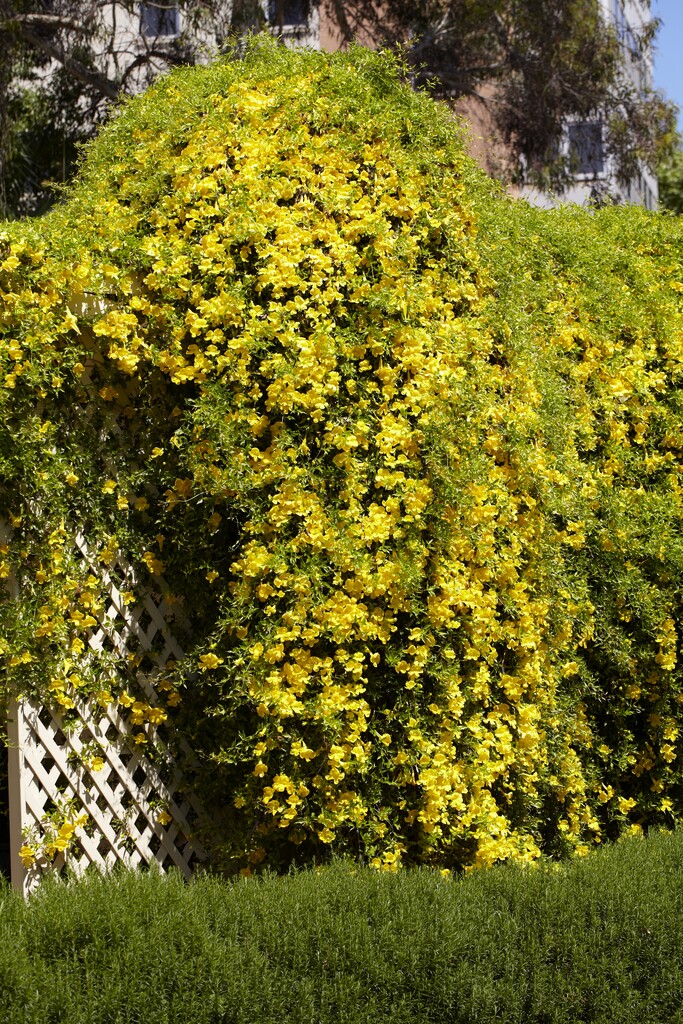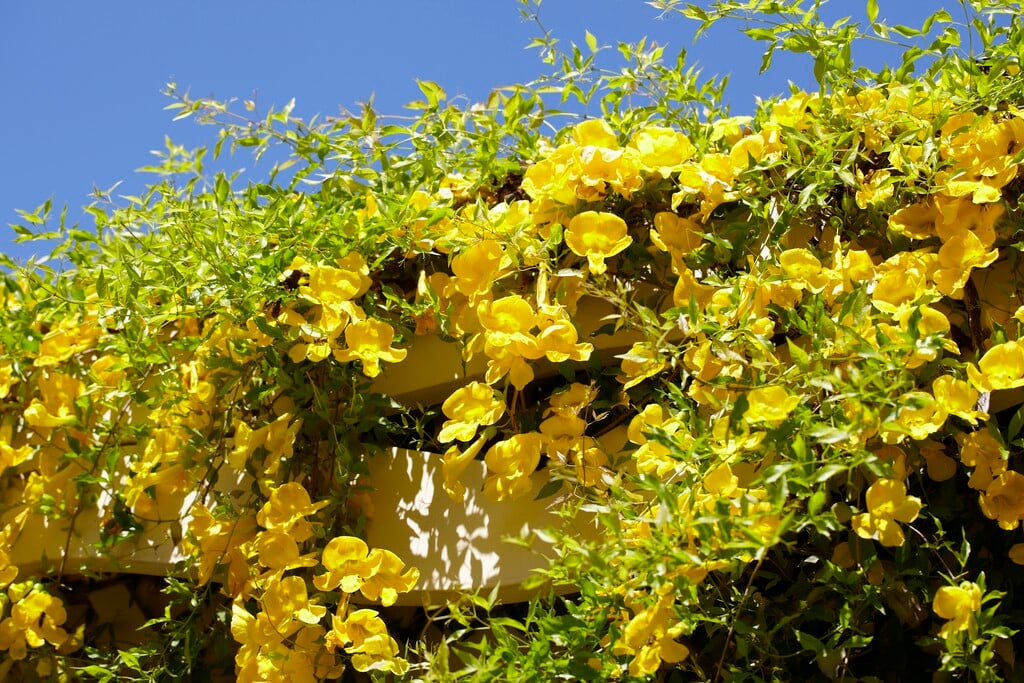Dolichandra unguis-cati
cat's claw creeper
A vigorous climbing vine bearing flared, trumpet-shaped yellow flowers. The showy blooms are particularly fragrant in the evening. Not hardy in the UK but in many tropical regions of the world it is listed as invasive
Size
Ultimate height
1.5–2.5 metresTime to ultimate height
2–5 yearsUltimate spread
1.5–2.5 metresGrowing conditions
Moisture
Moist but well–drainedpH
Acid, Alkaline, NeutralColour & scent
| Stem | Flower | Foliage | Fruit | |
| Spring | Yellow | Green | ||
|---|---|---|---|---|
| Summer | Yellow | Green | ||
| Autumn | Green | |||
| Winter |
Position
- Full sun
- Partial shade
Aspect
South–facing or West–facing or East–facing
Exposure
Sheltered Hardiness
H3Botanical details
- Family
- Bignoniaceae
- Native to GB / Ireland
- No
- Foliage
- Semi evergreen
- Habit
- Climbing
- Name status
Correct
- Plant range
- S America, Caribbean
How to grow
Cultivation
Under glass grow in large pots of peat-free, loam-based compost. Outdoors select a sunny, sheltered site in moisture-retentive soil. Provide support for the twining tendrils
Propagation
Propagate by seed, softwood or semi-hardwood cuttings
Suggested planting locations and garden types
- Cottage and informal garden
- Climber and wall shrubs
- Conservatory and greenhouse
Pruning
Pests
May be susceptible to mealybug, scale insect and aphids
Diseases
Generally disease-free
Love gardening
Sign up to receive regular gardening tips, inspiration, offers and more
View our Privacy Policy
Get involved
The Royal Horticultural Society is the UK’s leading gardening charity. We aim to enrich everyone’s life through plants, and make the UK a greener and more beautiful place.

